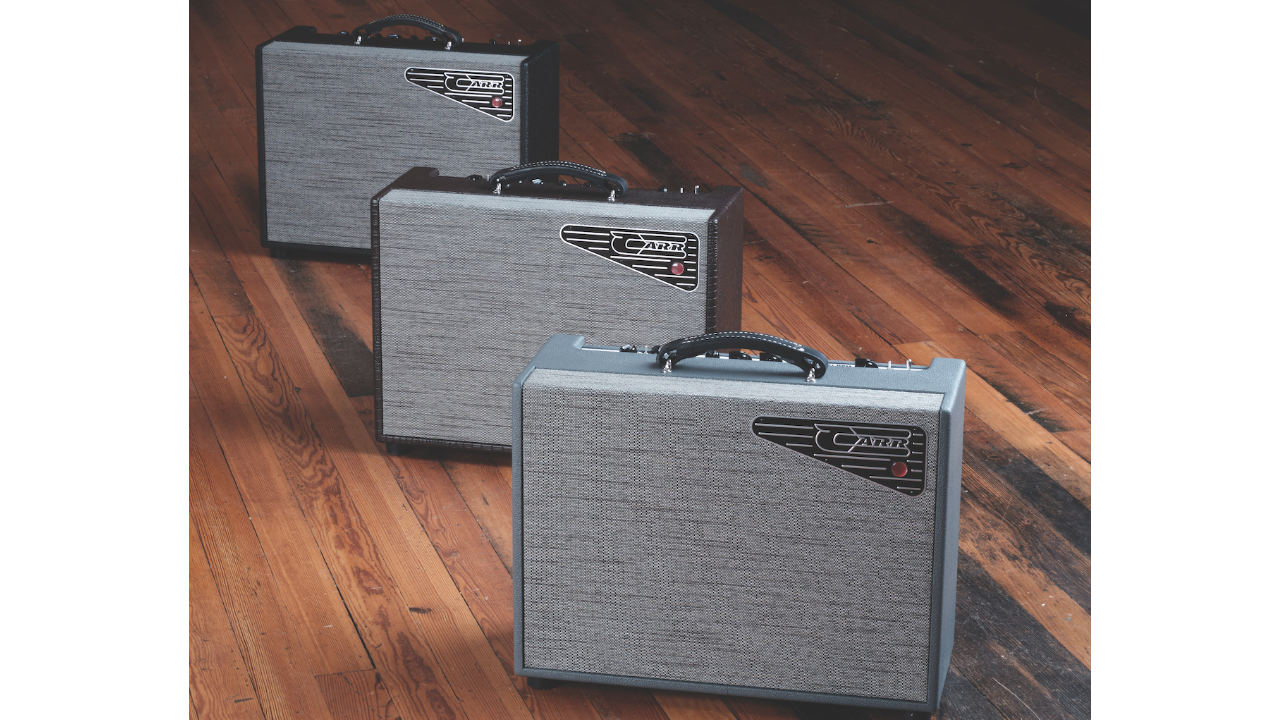“A three-in-one tribute to the best of British tone”: Carr Amplifiers' Bel-Ray excels at just about any vintage-voiced intentions a guitarist might have for a compact tube combo in 2024
Steve Carr's latest creation packs the essence of classic British amp tone together with a tremolo that’s out of this world

The classic British sounds of the ’60s and early ’70s have never fallen out of fashion, and it’s hard to imagine they ever will. The real trick for many guitarists in the 2020s, though, is achieving the sound of a cranked and raging Marshall “Plexi,” Hiwatt stack, or Vox AC30 in a format that jibes with today’s often restrictive playing situations.
It all comes together beautifully in the new Bel-Ray, a three-in-one tribute to the best of British tone from Carr Amplifiers. Proprietor Steve Carr is known for his uncanny ability to compact classic sounds into extremely portable packages, and the Bel-Ray is the latest of his seemingly magic presto-changos.
Onto the foundation of a 16-watt output stage driven by two EL84s with an EZ81 rectifier tube, the Bel-Ray grafts a three-mode front end that replicates these familiar voices from the late ’60s and early ’70s.
The trio might seem to go against another line in the Carr ethos – uncompromising originality – yet the maker has gotten there in the past by following classic inspirations, and the Bel-Ray does so in a way that is still undeniably its own.
Rather than simply cloning the circuits of the tonal targets, with switching to flip between them, Carr comes at it from a unique perspective, adapting gain and EQ stages using two 12AX7s and one EF86 pentode preamp tube to mimic the tones he’s after.
“I needed a challenge,” Carr tells GP, “and I had unfinished business with a wonderfully notorious preamp tube, the EF86. The EF86 pentode is a tube with a ton of character, more immediate than the omnipresent 12AX7, with wild energetic excitement, plus huge gain.
“In early 2023, I was considering a new model with loose Vox inspirations. The EF86 was used in the lower wattage early mid–’60s Vox amps – the AC4, AC10, and AC15, most notably – so it was back on my mind. The Bel-Ray grew from there.”
All the latest guitar news, interviews, lessons, reviews, deals and more, direct to your inbox!
In the Bel-Ray, the EF86 is used, rather unusually, as the final gain stage before the “concertina” phase inverter, following the 12AX7 in the first position and another used for the cathode-follower tone stack. And while this tube is often notoriously microphonic, as Carr mentions, he hasn’t found it problematic in this position, a situation aided by the use of new-old-stock (NOS) Svetlana EF86s in all production Bel-Rays. (Carr notes that you might still hear some pinging sounds emanating from this tube when you tap the control panel or chassis, but he says this isn’t an issue once you begin playing.)
Governing this clever circuitry are controls for level, followed by a three-position V66/H74/M68 voicing switch and dials for top, mid, bass, tremolo speed, and depth, and the attenuator.
The latter is coupled to a switch that delivers 16 watts in the up position for full power, or anything from two to zero watts with the attenuator kicked in. Another mini toggle alongside the level control selects high/low volume taper. In the up position, the signal hits the output stage full tilt, while in low it inserts a partial master-volume circuit to ease the assault.

The Bel-Ray 1x12 combo cabinet is made from European birch ply and measures 21 by 16 by 8.25 inches. Complete with its Fane F25 12-inch speaker, it weighs in at a mere 34 pounds. The looks mark another feather in Carr’s styling cap, too. My review sample was covered in dark-brown, faux-gator vinyl, contrasted by a grille cloth of brown and tan fleck, which niftily wraps up into the cabinet’s top panel.
And the build is first-class all the way, from the heavy-duty leather handle and hospital-grade AC cord to the aviation-standard Solen electrolytic capacitors, carbon-comp resistors, U.S.-made Jupiter signal caps, and custom transformers. Inside the chassis, it’s all wired together in Carr’s signature point-to-point construction, with components soldered directly one to the other with minimal use of supporting terminal strips and minimal excess wire as a result.
“Often, ideas like this sound simple, but in practice they can be very tough to implement,” Carr tells us. “Each of these classic tone sections has a different component architecture, particularly the H73 setting, a left-field curveball when viewed through the Fender/Marshall circuit lens. It took many prototype iterations, listening at the bench and playing with a band, to land on the best approach.”
Even with the design goals fully realized, Carr amps often deliver fun surprises that present more character than the outward simplicity might imply.
“The Bel-Ray’s tremolo can get pretty crazy when turned up all the way,” Carr explains, “especially with the speed maxed out. This circuit works by modulating the power tube bias and is similar to what you see in many ’50s-era amps. It has a very deep swell, which can get wildly fun. I left in the extra quarter-turn of unruly tremolo as it is so wacky!

“Also, the high-low level taper toggle is interesting. When I was playing the Bel-Ray prototype at home, I often wanted the volume to come on really slowly so I could push effects into the amp while keeping the output low and hit harder on the strings late night. The built-in attenuator lets you tame the volume, too, but the high-low gives you a better low-volume clean tone for very quiet playing.”

Testing the Bel-Ray with a Fender Telecaster and a Gibson Les Paul, plus a selection of overdrive pedals, I discovered a lively little combo with a surprisingly stout voice when pushed hard, yet the ability to sound very good when restrained in low-volume situations. As with almost every Carr amp I’ve tried, the Bel-Ray delivers an elusive blend of clarity and complexity.

It always cuts through, but with a depth and thickness that lend character even to clean settings, while retaining articulation amid the heavier grind. As Carr points out, the most natural pedal platform is found with the volume taper switch in the low position, where a Wampler Tumnus Deluxe and Ibanez TS10 Tube Screamer merged seamlessly with the circuit.
But nudging a semi-cranked Bel-Ray with overdrive on the high setting also proved a lot of fun. While I enjoyed the playing experience right from the start, I think I got the most out of it once I stopped thinking of the voicing switch as offering direct access to Vox, Hiwatt, and Marshall tones and began to consider it as presenting three different inspirations of those amps.
As Carr says, “It’s not a verbatim entire amp change to emulate these different sounds, it’s more about grabbing the spirit of Vox, Hiwatt, and Marshall. It’s not three clones but rather three vibes that are being presented.”

To that end, the Bel-Ray offers an impressively broad range of expressive, dynamic and inspiring tones, enough to excel at just about any vintage-voiced intentions a guitarist might have for a compact tube combo in 2024.
Available from Carr Amplifiers for $3,240.
Dave Hunter is a writer and consulting editor for Guitar Player magazine. His prolific output as author includes Fender 75 Years, The Guitar Amp Handbook, The British Amp Invasion, Ultimate Star Guitars, Guitar Effects Pedals, The Guitar Pickup Handbook, The Fender Telecaster and several other titles. Hunter is a former editor of The Guitar Magazine (UK), and a contributor to Vintage Guitar, Premier Guitar, The Connoisseur and other publications. A contributing essayist to the United States Library of Congress National Recording Preservation Board’s Permanent Archive, he lives in Kittery, ME, with his wife and their two children and fronts the bands A Different Engine and The Stereo Field.

